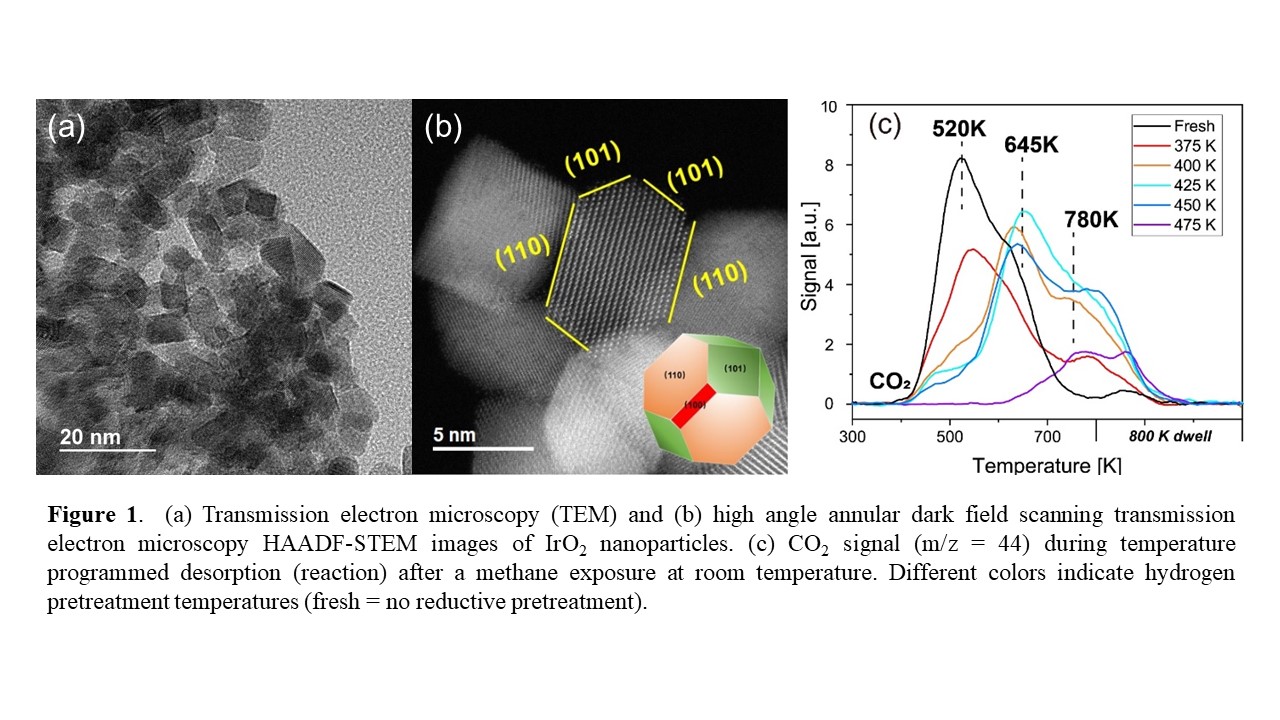Previous work has shown that IrO
2(110) surfaces are very active in the low-temperature activation of methane. Inspired by this work, we synthesized IrO
2 nanoparticles and IrO
2 supported on rutile TiO
2 nanorods and investigated their activity towards methane activation at room temperature. The synthesis conditions yielded IrO
2 nanoparticles approximately 8 nm in diameter and they were shown to expose a significant fraction of the desired (110) surface facets (Figure 1a and b). After an oxygen treatment to convert any Ir
2O
3 to IrO
2, and then outgassing to remove excess oxygen, the IrO
2 nanoparticles were exposed to methane at room temperature. After removing gas phase methane, the IrO
2 nanoparticles were heated in inert to 800 K while monitoring the products released. These experiments revealed that the IrO
2 nanoparticles do indeed activate methane at room temperature, as carbon dioxide desorbed around 520 K. The effect of a mild reduction (between 375 to 475 K) was also evaluated and revealed a slight increase in the overall amount of methane activated up to a reduction treatment of 425 K, as oxygen removal exposed additional sites. However, the CO
2 desorption peak also shifted to higher temperatures, revealing that the remaining oxygen was more difficult to remove.
To decrease the IrO2 content, TiO2-supported IrO2 catalysts with different IrO2 loading were also synthesized using an urea precipitation method. A synthesis method for rutile TiO2 nanorods were selected to maximize the (110) surface facets exposed. Even at a 10% iridium loading (by weight) on the TiO2 support, the signals obtained from the IrO2/TiO2 catalysts are significantly lower compared with the pure IrO2 but indicate that the supported catalyst can also activate methane at room temperature.


